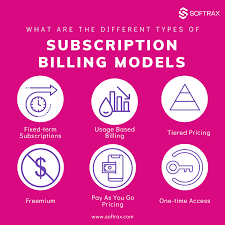In today’s digital world, subscription services are a major part of everyday spending, and billing descriptions like TST often appear on bank statements. How subscription services use TST in billing descriptions is a topic that confuses many consumers. This article explores what TST means, how it works in billing processes, and why it’s commonly used by subscription services.
What Does TST Mean in Billing Descriptions?
TST is a shorthand or identifier used in transaction records to label specific types of payments. It often appears when subscription-based services process charges. These codes are part of a system designed to clarify the merchant or service provider for the consumer.
While TST may initially seem vague, it usually accompanies additional details like the merchant name or location. For example, you might see “TST*StreamingServiceName” on your statement.
Why Do Subscription Services Use TST?
Subscription services frequently rely on TST in billing descriptions for the following reasons:
1. Streamlined Identification
TST helps categorize transactions, making it easier for banks and financial institutions to process payments.
2. Branding Limitations
Some subscription services operate through third-party billing systems, so their name might not appear clearly on statements. TST acts as a bridge between the consumer and the service.
3. Simplifying Recurring Payments
Recurring payments like monthly subscriptions often use codes like TST to ensure quick processing and consistent descriptions across billing cycles.
Common Examples of TST in Subscription Billing
TST is commonly associated with various subscription services, such as:
- Streaming Platforms: Subscriptions for movies, music, or podcasts often use TST in their transaction IDs.
- Online Courses or Learning Platforms: These services rely on recurring billing systems and may include TST in the descriptions.
- E-commerce Memberships: Platforms offering memberships or special benefits often categorize charges under TST.
- Health and Fitness Subscriptions: Apps for fitness tracking, virtual workouts, or diet plans also utilize TST.
Recognizing these patterns helps you understand the charges and their origin.
How to Identify a TST Charge on Your Statement
If you see TST on your bank statement and don’t recognize the charge, here’s how to identify it:
1. Look for Additional Details
Billing descriptions often include the merchant name or a partial identifier. Cross-check this with your recent subscriptions.
2. Check Your Subscription History
Log into your subscription accounts to verify the billing dates match the transaction on your statement.
3. Contact Customer Support
Reach out to the subscription service’s support team with details of the transaction. They can confirm if the charge is valid.
4. Use Bank Tools
Some banks provide detailed transaction histories, including merchant information, to help identify TST charges.
Benefits of Using TST in Subscription Billing
1. Simplifies Transactions
TST helps banks and merchants process payments faster, reducing errors or delays in recurring billing.
2. Enhances Customer Experience
Consistent descriptors make it easier for customers to identify their subscriptions.
3. Reduces Fraud Risk
Clear labeling of transactions reduces the likelihood of disputes or misunderstandings.
Challenges of TST in Billing Descriptions
Despite its benefits, TST can sometimes cause confusion for consumers:
1. Lack of Clarity
Some TST descriptions don’t provide enough information, leaving consumers unsure about the charge.
2. Difficult Disputes
Without clear identifiers, consumers may face delays when disputing charges or seeking refunds.
3. Overlapping Subscriptions
If you have multiple subscriptions with similar descriptions, it can be hard to distinguish between them.
Read more : https://betsays.com/
How to Avoid Confusion with TST Charges
To minimize confusion about how subscription services use TST in billing descriptions, follow these tips:
1. Keep Track of Subscriptions
Maintain a list of all active subscriptions and their billing dates.
2. Set Notifications
Enable email or text alerts from your bank for transactions, so you can verify charges immediately.
3. Use Subscription Management Tools
Apps like Truebill or Mint can help track and organize subscription payments.
4. Monitor Statements Regularly
Review your bank statements monthly to spot unfamiliar charges early.
What to Do If You Suspect a Fraudulent TST Charge
If a TST charge looks suspicious, take these steps:
- Verify the Merchant
Use your transaction history to identify the service. - Contact the Merchant
Reach out to the subscription service for clarification. - Notify Your Bank
If the charge is unrecognized, report it to your bank and dispute the transaction.
Conclusion
Understanding how subscription services use TST in billing descriptions can help consumers better manage their finances and avoid unnecessary confusion. TST serves as an identifier for recurring payments, simplifying the billing process for subscription services. Just as knowing Why Are Honeybees All Over My Mophead can reveal important details about their behavior, staying informed about TST charges helps uncover the origin of transactions. By monitoring your statements and managing subscriptions effectively, you can ensure that every TST charge on your bank statement is accounted for.
